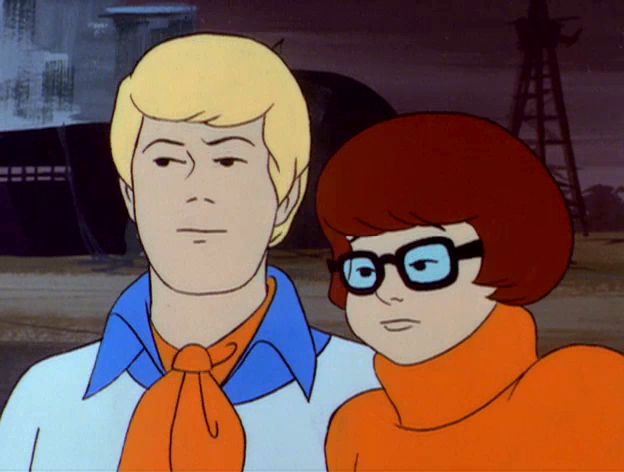
Nathalie Moreno, Co-Editor-in-Chief
Nov. 7
Amidst all the traction surrounding the release of the newest film in the “Scooby Doo” franchise, “Trick or Treat Scooby Doo!” (2022), there is one aspect of the film that audiences will not stop talking about—the “coming out” of original cast member Velma Dinkley as LGBTQ. And frankly, it’s about time.
Speculation surrounding Velma’s sexuality is not new. Fans and critics alike have talked about signs pointing to Velma being queer for years. Tells include characteristics from her tomboyish clothing to her little regard for men. Some people have been so sure of Velma’s sexuality that this reveal is met with feigned surprise or shock.
Velma’s newfound lesbian identity is made clear in recently released film clips that have been circulating social media. She is seen blushing and googling eyed, basically drooling over fashion designer Coco Jones, a new character who is presumably there to help the gang solve the mystery at hand.
In the video, Velma cuts herself off mid-sentence, dropping all the scooby snacks on the floor, her glasses fogging up and her face turning beet red; these are all clear indications that Velma is crushing on Coco.
The blatant depiction of Velma’s attraction is a big improvement, considering WarnerBros. Studios shoved boyfriends Shaggy (“Mystery Incorporated”) and Patrick (“Scooby Doo 2: Monsters Unleashed”) down her throat in the past films.
Creators of the live action and animated films Tony Cervone and James Gunn both confirmed that their Velma is indeed written into the canon as queer, and always has been.
“I obviously don’t represent every version of Velma Dinkley, but I am one of the key people that represents [the LGBTQ] one,” Cervone captioned an image of Velma in front of a pride flag to his Instagram account in 2020. “We made our intentions as clear as we could ten years ago. Most of our fans got it. To those that didn’t, I suggest you look closer. There’s no new news here.”
Cervone further clarifies in his response to a fan comment that “Velma is not bi. She’s gay.”
Fans have taken to Twitter to express their excitement and approval of Velma’s coming out, with some tweets calling her “a lesbian icon.” Even actress Hayley Kiyoko, who played Velma in the 2009 live action film “Scooby Doo! The Mystery Begins” tweeted her approval.
“I remember booking Velma in 2008. It was my first big role in a movie. I also remember thinking ‘I wonder if they know they hired a lesbian as Velma’ here we are, 14 years later,” Kiyoko tweeted. “Love you all so much.”
Despite all the excitement surrounding Velma, the prolonged effort to write her into the films as her true homosexual self is a reflection of the political atmosphere surrounding censorship of the LGBTQ+ community.
In 2020, Scooby Doo creator Gunn, who wrote the 2002 live action, tweeted back to a fan who questioned Velma’s sexuality. Gunn responded back with, “I tried!” He then expanded on the limitations and changes made to his original script by theWarnerBros studio.
“In 2001 Velma was explicitly gay in my initial script for 2002’s live-action “Scooby-Doo,’” Gunn said in the tweet, which has since been deleted. “But the studio just kept watering it down & watering it down, becoming ambiguous (the version shot), then nothing (the released version) & finally having a boyfriend (the sequel).”
There’s a gross repression and lack of inclusion of LGBTQ+ characters in children’s media that has been around for years. And when LGBTQ+ characters are included into series, like “The Powerpuff Girls’” Him, they are villainized and depicted as evil.
This neglect is dangerous to the development of children’s identity, only further perpetuating the idea that there is something wrong with identifying as part of the LGBTQ+ community, something to hide. After all, we learn from what we see in the media, so the options are evil or nothing at all, newer members of the LGBTQ+ community are simply screwed.
Though there is no timeline to when people discover their sexuality (including changes of), the majority of people say they knew they were not straight between the ages of 10 to 19.
It’s important for children to see characters in the media that look like them. Studios, producers and directors need to stop contributing to the homophobic environment that already severely exists off-screen, and allow characters to be the true gay, lesbian, transgender or any other self they’re written as.







